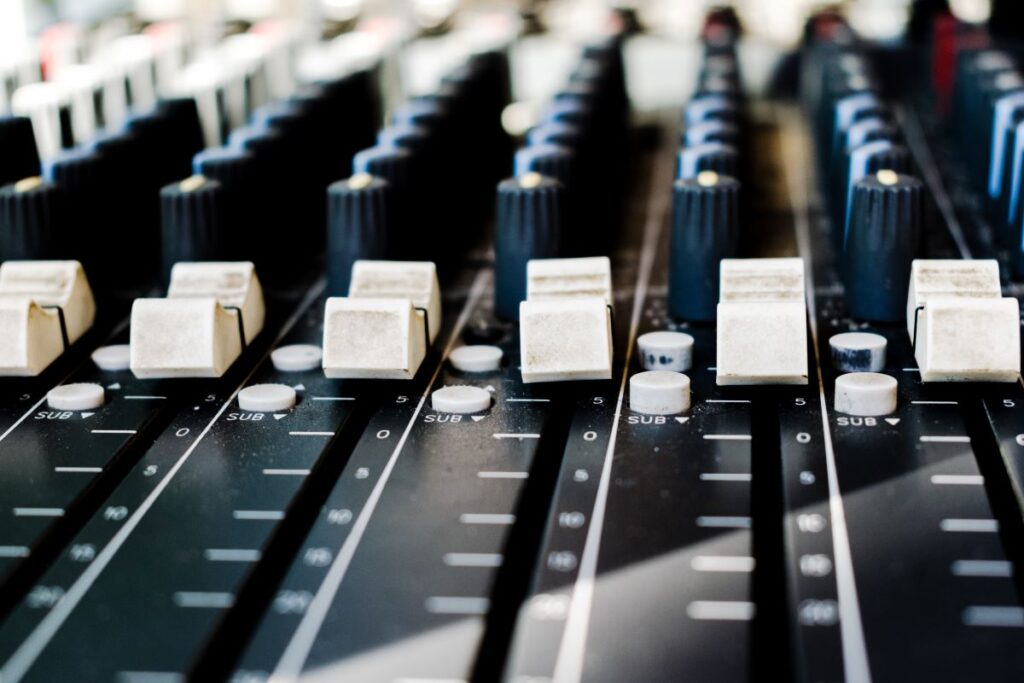
Autism spectrum conditions (ASC) affect at least 1% of the population (Brugha et al., 2011) with symptoms including social communication difficulties, obsessive interests, repetitive behaviours, and increased or reduced perception of sensory input (American Psychiatric Association [APA], 2013). These neurodevelopmental differences lie on a spectrum spanning from subtle to severe which means many, especially girls who tend to mask symptoms, and will receive a late diagnosis (National Institute for Health and Care Excellence [NICE], 2012). This in turn can have an impact on mental health as the individual struggles to fit into a neurotypical world maladjusted to their needs, but without understanding the reasons why.
More than 40% of adults with an ASC diagnosis, will also struggle with their mental health with conditions including, anxiety disorders, depression, obsessive compulsive disorder, post-traumatic stress disorder and psychosis (Joshi et al., 2013; Lever & Geurts, 2016; Russell et al., 2016). Social anxiety (SA), the fear of being in social situations and concern about how others perceive you (APA, 2013), commonly co-occurs with autism with 13-40% of autistic adults clinically referred for assessment, found to meet the diagnostic criteria (Hofvander et al., 2009; Joshi et al., 2013; Ketelaars et al., 2008; Lugnegard et al., 2011; Russell et al., 2016). It is thought that this high figure is due to a number of factors:
- Introspection: poor ability to identify and understand emotions
- Interoception: difficulty in noticing changing bodily states, e.g increased heartbeat
- Communication difficulties
- The features of autism over-showing the symptoms of social anxiety.
There have been a number of quantitative studies examining how ASC contributes to the development of SA in which participants have completed an Autism Quotient diagnostic tool (Baron-Cohen et al., 2001a) alongside the Social Phobia Anxiety Inventory-23 (Roberson-Nay et al., 2007). Such research has revealed a high level of crossover symptoms between the two conditions. Other studies have demonstrated that higher levels of ASC symptoms have correlated with higher levels of SA (Bejerotet al., 2014; Kanai et al., 2011; Lever & Geurts, 2016; Spain et al., 2016). Unfortunately, as the majority of such studies have relied on self-rating scales, results have tended to be quite generic, as there has been little opportunity to further question participants about the nature or causes of their worries.
This study therefore uses qualitative methods of in-depth interviews to better understand the experience of SA from an autistic perspective (Spain, Yarar & Happé, 2020).

Social anxiety, the fear of social situations, is common for people with an autistic spectrum condition; up to 40% of adults referred for assessment, met the diagnostic criteria.
Methods
Seven men with a confirmed clinical diagnosis of ASC & SA were approached from clinical research databases at Kings College London and the South London and Maudsley NHS Foundation Trust. Six agreed to take part.
A semi structured topic guide was created for participants, which included information on anxiety-provoking social situations, emotions and thoughts associated with SA and coping strategies used.
Interviews were conducted by the same researcher, who started with the same initial open ended question: “I’d like to start by asking if you ever get anxious in social situations? I wonder if you could tell me a bit more about this”. Recordings of the interviews were later transcribed verbatim and listened to and discussed by all researchers to eliminate bias.
Results
The results from the interviews were divided into 7 themes:
1. Causes of Social Anxiety
Several factors were identified as increasing vulnerability to social anxiety (SA) including the characteristics of autism, which meant that the participant struggled to initiate and sustain discussions.
A feature of autism spectrum conditions (ASC) is the length of time needed to process information, making the spontaneity of social interactions difficult, something compounded by difficulty in interpreting body language and tone.
Participants found that these difficulties meant they had experienced negative social interactions in the past, creating a belief that they simply don’t fit in or are inferior in someway to others.
2. Anxiety provoking situations
The environment played a big part in creating anxiety provoking situations. When environments necessitated the need to process competing sensory input in places such as pubs and supermarkets, anxiety was greater.
3. Physical symptoms
All participants reported physical symptoms of anxiety including headaches, tight muscles and feeling sick before and/ or during an event. Significantly it was reported that the senses seemed to be heightened, becoming more dominant as anxiety increased; noises became louder, smells stronger etc. This is a feature of SA potentially unique to those with ASC.
4. Chronicity
All participants felt that they had had experienced social anxiety for a significant amount of time.
5. Coping Strategies
Seven types of coping strategies were identified amongst the participants.
- Avoidance – including planning to do things at specific times when places were likely to be less busy.
- Planning and predicting – planning practicalities such as travel routes and participants playing out conversations in their head to try and predict the conversation.
- Behavioural strategies – listening to music was popular, especially in public, but things like going for a walk, choosing who to sit by, and smoking were also used to help ease anxiety.
- Impression management – this involved having tight control of behaviour in order to try and ensure they came across well.
- Cognitive strategies – several participants described being hyper-vigilant during social events and ruminating about conversations and perceptions afterwards. This is something participants were able to recognise as unhelpful, perhaps increasing their levels of social anxiety.
- Drugs and alcohol – some used these to help them feel more relaxed or to make social situations more tolerable. Whilst this strategy may have been useful in the immediate situation, it was acknowledged that ultimately it made matters worse, adding further issues to contend with.
- Stimming (a repetitive movement commonly associated with ASC, for example flapping hands, or tapping feet). Only one person (out of the 6 interviewed) said they used this in social situations but always away from others.
6. Impact
SA had an impact on both social and occupational functioning; participants spoke of only staying within their set circle of friends, working to control the range and predictability of social interaction, and refusing work nights out.
SA also had an impact on mental health with participants experiencing symptoms of PTSD, depression and sleep disturbance.
7. Interventions
A number of things were described as helpful in reducing SA:
- Validation of autism diagnosis – receiving a diagnosis was found to be very helpful as it helped to explain the reasons for social difficulties, removing blame and facilitating acceptance. It also enabled participants to make reasonable requests for adaptations within social situations.
- Psychological interventions – interventions such as CBT were found to be helpful as they gave participants the opportunity to discuss and plan social situations whilst reassessing their emotions and beliefs about it.
- Medication – this was found to be helpful in lifting mood associated with depression, but not in addressing the specific symptoms of SA.
- Increasing others awareness of ASC – participants found that increasing other people’s awareness of ASC was important, as it not only explained potential needs and difficulties that may be faced, but also made it possible for people to request adaptations (for example, a separate quieter dining area) that would make services easier to access.

It was reported that senses seemed to be heightened and became more dominant with increased anxiety, a feature of social anxiety potentially unique to those with autistic spectrum conditions.
Conclusions
- Social anxiety for people with an autism diagnosis is common.
- The usual vulnerability factors such as adverse social experiences and low self esteem apply equally to people with or without ASC. However, for people on the autistic spectrum, the very characteristics of the condition, such as difficulties with social interaction, increases their levels of susceptibility.
- This study adds to the body of evidence by demonstrating that the level of SA increased not only according to social factors but also due to environmental factors such as noise, lighting and predictability of interactions. Participants revealed that these sensory factors increased in intensity as anxiety grew which is something generally unique to individuals with ASC.
- The degree to which sensory processing is a symptom and/ or a predisposing factor of SA for adults with an autism diagnosis, is an area that needs further investigation.

This study adds to the body of evidence by demonstrating that the level of social anxiety increased not only according to social factors but also due to environmental factors such as noise, lighting and predictability of interactions.
Strengths and limitations
This is a useful piece of research in that its design allows for more specific understanding of potential difficulties faced by autistic patients with comorbid SA, rather than the more generic results of previous quantitative studies. However, despite best efforts, all participants were male; it is recognised that women’s social experiences and anxieties may be different to men’s, especially as women are more likely to mask symptoms than men (Lai et al., 2017).
All bar one participant were diagnosed with ASC in adulthood, hence it would be interesting to examine the difference that late vs early diagnosis has on core beliefs, coping styles, social experiences and the development of SA.
Only participants with a diagnosis of SA in addition to ASC were interviewed, therefore it is not possible to compare and contrast experiences of autistic people without SA.

All participants were male hence it’s not possible to establish whether women with a dual diagnosis of autism spectrum conditions and social anxiety, share similar experiences.
Implications for practice
- The research shows that the features of autism compound social anxiety, particularly with regards to the environment and predictability.
- This is useful information as it allows organisations to incorporate understanding of ASC into planning a less triggering environment. By asking patients questions about reasonable adjustments, by offering an alternative waiting environment with less sensory stimulation, and by providing information to help predict the visit, it should be possible to reduce the impact of social anxiety during the visit.
- However, further cross sectional and longitudinal mixed methods research is required to inform treatment responses.

Understanding how the features of autism compound social anxiety allows organisations to plan for more appropriate environments that are less likely to trigger anxiety.
Conflicts of interest
None reported.
Links
Primary paper
Spain, D., Yarar, E. Z., & Happé, F. (2020) Social anxiety in adults with autism: a qualitative study. International Journal of Qualitative Studies on Health and Well-being, 15(1). DOI: 10.1080/17482631.2020.1803669
Other references
American Psychiatric Association (APA). (2013). DSM-5. APA.
Baron-Cohen, S., Wheelwright, S., Skinner, R., Martin, J., & Clubley. E. (2001). The Autism-Spectrum Quotient (AQ): Evidence from Asperger syndrome/ high-functioning autism, males and females, scientists and mathematicians. Journal of Autism and Developmental Disorders 31, 5–17. https://doi.org/10.1023/A:1005653411471
Bejerot, S., Eriksson, J. M., & Mortberg, E. (2014). Social anxiety in adult autism spectrum disorder. Psychiatry Research, 220(1-2), 705-707. https://doi.org/10.1016/j.psychres.2014.08.030
Brugha, T. S., McManus, S., Bankart, J., Scott, F., Purdon, S., Smith, J., Bebbington, P., Jenkins, R., & Meltzer, H. (2011). Epidemiology of autism spectrum disorders in adults in the community in England. Archives of General Psychiatry, 68(5):459–465. doi:10.1001/archgenpsychiatry.2011.38
Clark, D. M. (2001). A cognitive perspective on social phobia. In W. R. Crozier & L. E. Alden (Eds.), International hand-book of social anxiety: Concepts, research and interventions relating to the self and shyness. (pp405-430). London.
Clauss, J. A., & Blackford, J.U. (2012). Behavioral inhibition and risk for developing social anxiety disorder: A meta-analytic study. Journal of the American Academy of Child and Adolescent Psychiatry, 51(10). 1066-1075. https://doi.org/10.1016/j.jaac.2012.08.002
Hofvander, B., Delorme, R., Chaste, P., Nyden, A., Wentz, E., Stahlberg, O., … Gillberg, C. (2009). Psychiatric and psychosocial problems in adults with normal-intelligence autism spectrum disorders. BMC Psychiatry 9(1), 35. https://doi.org/10.1186/1471-244X-9-35
Joshi, G., Wozniak, J., Petty., C., Martelon, M. K., Fried, R., Bolfek, A., Kotte, A., … Biederman, J. (2013). Psychiatric comorbidity and functioning in a clinically referred population of adults with autism spectrum disorders: A comparative study. Journal of Autism and Developmental Disorders, 43(6), 1314–1325 DOI 10.1007/s10803-012-1679-5
Kanai, C., Iwanami, A., Hashimoto, R., Ota, H., Tani, M., Yamada, T., & Kato, N. (2011). Clinical characterization of adults with Asperger’s syndrome assessed by self-report questionnaires based on depression, anxiety, and personality. Research in Autism Spectrum Disorders 5(4), 1451-1458. https://doi.org/10.1016/j.rasd.2011.02.005
Ketelaars, C., Horwitz, E., Sytema, S., Bos, J., Wiersma, D., Minderaa, R., & Hartman. C. A. (2008). Brief Report: Adults with mild autism spectrum disorders (ASD): Scores on the autism spectrum quotient (AQ) and comorbid psychopathology. Journal of Autism and Developmental Disorders 38(1), 176–180. DOI 10.1007/s10803-007-0358-4
Lai, M.-C., Lombardo, M. V., Ruigrok, A. N., Chakrabarti, B., Auyeung, B., Szatmari, P., Happé, F., & Baron-Cohen, S. (2017). Quantifying and exploring camouflaging in men and women with autism. Autism, 21(6), 690–702. https://doi.org/10.1177/1362361316671012
Lever, A. G., & Geurts, H. M. (2016). Psychiatric co-occurring symptoms and disorders in young, middle-aged, and older adults with autism spectrum disorder. Journal of Autism and Developmental Disorders, 46(6), 1916–1930. DOI 10.1007/s10803-016-2722-8
Lugnegard, T., Hallerback, M. U., & Gillberg, C. (2011). Psychiatric comorbidity in young adults with a clinical diagnosis of Asperger syndrome. Research in Developmental Disabilities, 32(5), 1910-1917. https://doi.org/10.1016/j.ridd.2011.03.025
National Institute for Health and Care Excellence (NICE) . (2012). Autism: Recognition, referral, diagnosis and management of adults on the autism spectrum, NICE guidelines [CG142]. Department of Health.
Ng, A. , Abbott, M. , & Hunt, C. (2014). The effect of self-imagery on symptoms and processes in social anxiety: A systematic review. Clinical Psychology Review, 24(8), 620–633. https://doi.org/10.1016/j.cpr.2014.09.003
Piccirillo, M. L., Dryman, M. T., & Heimberg, R. G. (2016). Safety behaviors in adults with social anxiety: Review and future directions. Behavior Therapy, 47(5), 675-687. https://doi.org/10.1016/j.beth.2015.11.005
Roberson-Nay, R., Strong, D., Nay, W., Beidel, D., & Turner, S. (2007). Development of an abbreviated social phobia and anxiety inventory (SPAI) using item response theory: The SPAI-23. Psychological Assessment 19(1), 133. https://doi.apa.org/doiLanding?doi=10.1037%2F1040-3590.19.1.133
Russell, A. J., Murphy, C. M., Wilson, E., Gillan, N., Brown, C., Robertson, D. M., Murphy, C. M., Craig, M. C., Deeley, Q., Zinkstok, J., Johnston, K., McAlonan, G. M., Spain, D., & Murphy, D. G. (2016). The mental health of individuals referred for assessment of autism spectrum disorder in adulthood: A clinic report. Autism, 20(5), 623–627. https://doi.org/10.1177/1362361315604271
Siegel, R. S., La Greca, A. M., & Harrison, H. M. (2009). Peer victimization and social anxiety in adolescents: Prospective and reciprocal relationships. Journal of Youth and Adolescence, 38(8), 1096–1109. https://doi.org/10.1007/s10964-009-9392-1
Spain, D., Happé, F., Johnston, P., Campbell, M., Sin, J., Daly, E., Ecker, C., Anson, M., Chaplin, E., Glaser, K., Mendez, A., Lovell, K., & Murphy, D. G. (2016). Social anxiety in adult males with autism spectrum disorders. Research in Autism Spectrum Disorders, 32, 13 – 23. https://doi.org/10.1016/j.rasd.2016.08.002
Wong, N., Sarver, D. E., & Beidel, D. C. (2012). Quality of life impairments among adults with social phobia: The impact of subtype. Journal of Anxiety Disorders, 26(1), 50–57. https://doi.org/10.1016/j.janxdis.2011.08.012
Photo credits
- Photo by Karl Fredrickson on Unsplash
- Photo by Priscilla Du Preez on Unsplash
- Photo by Rima Kruciene on Unsplash
- Photo by Patrick Tomasso on Unsplash
- Photo by Dainis Graveris on Unsplash
- Photo by Priscilla Du Preez on Unsplash
